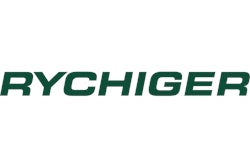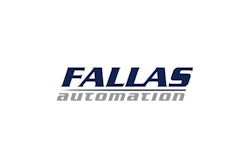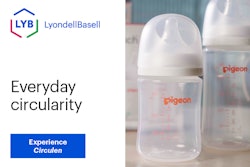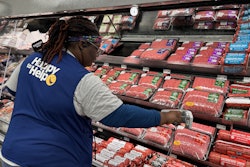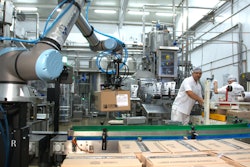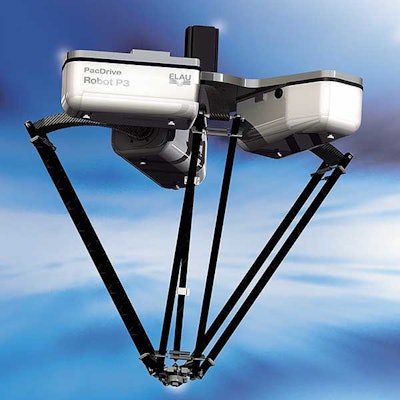
At the recently concluded PACK EXPO show in Las Vegas, numerous observers commented on the proliferation of robotics in packaging machinery compared to just a year or two earlier.
These new robots were no longer large, articulated arm robots designed originally for the automotive industry and adapted for end-of-line applications (palletizing and case packing). Increasingly, 2-axis and 3-axis delta robots are being used in both primary (product pick-and-place) and secondary (cartoning and case packing) packaging systems.
Nor were these all stand-alone robots designed by traditional robot manufacturers. More packaging systems providers are developing their own robot mechanics integral to their machinery. In so doing, they are increasing performance, better synchronizing robot motion with the rest of the machine, and reducing componentry and footprint.
These designers have recognized that their packaging knowledge allows them to more effectively integrate the flexibility of robotics into the process -- while carving out a new profit center for themselves.
As of this writing, the key U.S. patent on 3-axis delta robots – those highly recognizable ‘spider’ arms typically mounted over a workspace and primarily used for pick-and-place of light objects – has expired. With the end of patent protection, you can expect to see more of these delta designs enter the packaging marketplace.
Already, 2- and 3-axis delta arms are being offered as ‘kits’ giving machine builders the option of outsourcing in addition to designing their own.
The trend toward machines with integral robotic capability also represents a business strategy for OEMs unwilling to consign themselves to becoming mere integrators of third party robots with their historically proprietary control systems. These OEMs want to preserve their engineering capabilities, stimulate innovation and market their own intellectual property.
The challenge
ARC Advisory Group published a research report titled Integral Robotics Raises Agility and Flexibility of Packaging Machinery: Modular Design Techniques Facilitate the Integration of Robotics.
Senior analyst Sal Spada wrote that “the challenge that packaging machine builders face is that robotic motion is generally out of their domain of expertise.” This refers to kinematics, which “utilizes highly specialized path planning algorithms, blending, and resolving for multiple trajectories to the same point.”
This is why robot manufacturers have for so long been able to market their own control systems together with their robots, and why they are generally guaranteed residual control upgrade business as control technology advances faster than the mechanical arms wear out.
But robot control options are changing, as open architecture solutions and become available that let OEMs design their own arms or outsource the mechanics. These control solutions can not only replace multiple robot controllers, but the packaging machine’s motion controller and PLC as well.
Here are examples of packaging machinery incorporating robotics from various regions of the world:
Nuspark Engineering
Canada
Case packer
This compact case packer from Nuspark Engineering can be equipped with one (shown) or two side-by-side 2-axis delta robot arms depending on throughput requirements.
The company also synchronizes infeed systems to transport, collate orient and buffer products, as well as provide positive control of case opening. These are some of the benefits of knowledgeable packaging systems designers embedding robotics into their machinery rather than becoming integrators of general purpose robots.
The additional arm has no impact on footprint. The design uses servo modules, and is therefore scalable without increasing the size of the electrical cabinet as well.
Fallas Automation Adabot R700
USA
Case packer
Fallas Automation calls its design the Adabot because it lets you easily add a ‘bot -- actually up to four case packing robots together -- all running off the original controller.
Fallas has selected the 2-axis delta for its higher payload capacity and deeper reach into cases compared to 3-axis deltas. Their design uses stiff, lightweight carbon fiber to maximize payload and speed, resulting in 80 cpm for loads up to 2 lbs. and 5 lb. payloads at up to 40 cpm.
Fallas specializes in difficult to handle bagged and flow wrapped products, and is configured to pick uncollated packs at these high speeds without the use of a vision system.
Robotic flexibility, including wrist rotation, allows the Adabot to produce different pack patterns that would require two different conventional machines. The operator can build these patterns from the HMI and save them as recipes for reuse.
Cavanna Cartesio G35EFC
Italy
Cartoner
The Cavanna Cartesio Model G35EFC robotic cartoning system integrates three articulated robotic arms to form, fill, and seal cartons in a single unit whose footprint is about 16’ x 6’ x 6’.
Each articulated robotic arm uses three servo motors. Seven other servos are responsible for tightly synchronizing an infeed belt, an oscillator device, a dual-belt racetrack collator, and a flighted carton infeed conveyor. All of these are synchronized not only with each other but also with the motions of the three robotic arms.
A traditional mechanical machine would never have been able to deliver the smooth and precise positioning accuracy of this robotic machine.
Pester pac robot 3
Germany
Orienter/infeed system
Pester Pac Automation’s pac robot 3 is yet another 2-axis delta design. It’s shown here with their PEWO-pack 450 Compact bottle wrapper for the health & beauty care industry (e.g. shampoo bottles). Continuous product guidance allows gentle handling of up to 300 unstable bottles per minute.
As bottles are discharged from the labeler, they enter the collating unit where the pac robot 3 picks two sets of 6 bottles, indexes them 90° and places them on the wrapper’s infeed belt. Bottles are inserted into the servo-controlled, single-lane sealing unit at up to 50 cpm, and wrapped and sealed in PE film before entering the new PEWO-therm shrink tunnel.
About ELAU
ELAU is the only company worldwide exclusively focused on the automation of packaging machinery. ELAU’s PacDrive™ automation system offers the only automation platform purpose-built for the packaging industry.
ELAU equips over $1 billion worth of the world’s best machines annually, with over 35,000 PacDrive systems already deployed in packaging machinery worldwide.
The market demands packaging operations that are more flexible and efficient to fulfill marketing, supply chain and global business strategies. ELAU innovations have enabled a revolution in mechanical, software and hardware modularity to deliver these agile packaging systems.
Now ELAU invites the worldwide packaging community to take modularity to the next level with our new PacDrive™ Intelligent Servo Modules.
Far more than just distributing the servo drive out onto the motor, servo modules enable plug-and-play modularity, literally plugging machine modules into or out of the packaging system to change functionalities, formats and capacities.
By vastly streamlining the networks, cabling, interconnects and electrical hardware, Intelligent Servo Modules smaller, simpler, more maintainable and reconfigurable.







